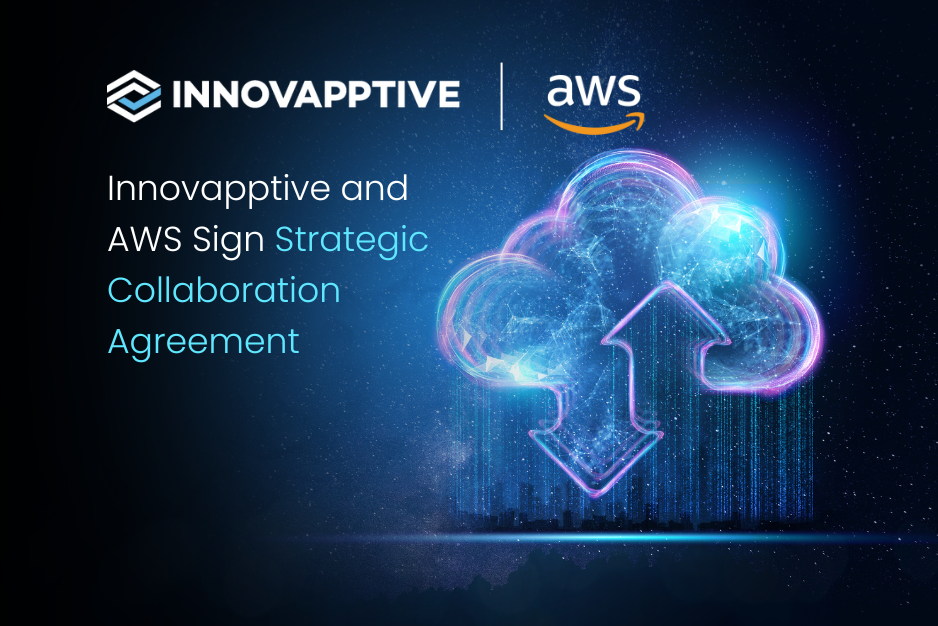Your Ultimate Guide to Connected Worker

In the rapidly evolving industrial landscape, maximizing plant efficiency and ensuring optimal maintenance are more urgent than ever. Manufacturers, oil & gas, utilities, chemicals, and other process and discrete industries face growing complexity. To stay competitive, plants must reduce downtime, improve productivity, and ensure compliance. These are no longer optional. This is where a robust connected worker platform can be a game-changer for you.
What is a Connected Worker?
A connected worker uses digital tools such as smartphones, tablets, wearables, and IoT devices to integrate seamlessly into the work environment. These technologies enable real-time data access, communication, and collaboration, allowing employees to work more efficiently and safely. Connected workers can access instructions, report issues, monitor equipment, and collaborate remotely, which improves productivity and operational effectiveness while maintaining safety. This approach leverages human expertise, mobility, and digital enhancements to drive better job performance and business outcomes, particularly in manufacturing and plant operations.
What is a Connected Worker Platform?
At its core, a connected worker platform is a digital ecosystem designed to empower frontline workers by integrating people, processes, and technology into a seamless workflow. It provides real-time communication, access to critical information, and AI-powered insights directly in the hands of maintenance technicians, operators, safety personnel, and others in the plant.
Traditional maintenance management systems are siloed point solutions that focus only on asset data, hindering collaboration and operational efficiency. Connected worker platforms solve this problem by unifying operations, maintenance, warehouse, safety, and quality, driving holistic improvement across the organization. With mobile-first design, AI, digital workflows, and IoT connectivity, these platforms enable digital transformation at scale.
READ: Building the future of Industrial Operations with Innovapptive and AWS
How do Connected Worker Solutions Combat Industry Challenges?
Asset-heavy industries such as manufacturing plants traditionally face the following hurdles:
Disconnected systems and teams: Information silos hinder collaboration between maintenance, operations, and other functions, leading to delays and mistakes
Paper-based or manual processes: Outdated workflows lead to inefficiencies, errors, and a lack of traceability
Unplanned downtime: Equipment failures disrupt production, inflate costs, and impact customer satisfaction.
Safety compliance risks: Manual tracking of safety procedures often leads to non-compliance and incidents.
Data overload without actionable insights: Plants generate vast amounts of data without meaningful context or predictive capabilities.
A connected worker platform addresses these challenges by giving frontline workers unified tools for efficient work, instant communication, digital SOPs, and AI-driven predictions.
Delloitte’s 2025 Manufacturing Industry Outlook emphasizes the importance of digital transformation and connected operations as critical to maintaining resilience and competitive advantage in a challenging business climate.
READ: What CDOs Need To Know About Connected Worker Platforms
Key Benefits of a Connected Worker Software for Plant Maintenance and Efficiency
Implementing a connected worker platform delivers measurable benefits across multiple dimensions of operational performance. Organizations typically see improvements in productivity, quality, safety, and employee satisfaction within months of deployment.
-
Reduce unplanned downtime: AI-powered predictive analytics monitors equipment health and alerts teams before failures occur
-
Increase wrench time: Mobile tools help technicians access instructions, record data, and close work orders efficiently, cutting redundancies
-
Improve quality and safety: Digital workflows enforce compliance with safety protocols, reducing incidents and audit failures
-
Streamline collaboration: Unified communication channels connect frontline workers with supervisors and planners, facilitating faster issue resolution
-
Achieve operational insight: Real-time dashboards and KPIs enable proactive plant management
What are the Key Features of Connected Frontline Worker Solutions?

-
Predictive maintenance powered by AI
The platform collects data from IoT (Internet of Things) sensors and enterprise systems, then applies machine learning to predict equipment failures. Teams can schedule repairs proactively, reducing breakdowns and extending the life of their assets.
Mobile-first user experience for frontline workers
A connected worker platform prioritizes usability, offering mobile apps that are accessible on smartphones, tablets, and wearables. Innovative features, such as natural language processing, voice commands, and computer vision, assist workers with inspections, maintenance tasks, and incident reporting, all while minimizing downtime.
Integrated workflows across plant functions
Connected workflows cross departmental lines, uniting operations, maintenance, safety, warehouse, and quality on one platform. This improves work order management, inventory use, and safety response.
Real-time plant performance monitoring
Managers gain instant visibility into key metrics, including Overall Equipment Effectiveness (OEE), Mean Time to Repair (MTTR), and compliance rates. Automated shift handovers and digital logs maintain operational continuity and simplify audits.
Enhanced safety and compliance
The platform automates safety checks, lockout/tagout, and audit trails. AI tracks safety adherence and predicts risks, cutting accidents and fines.
Seamless integration with existing systems
A true connected worker platform seamlessly integrates with your existing Enterprise Asset Management (EAM), ERP, and IoT infrastructure. Prebuilt connectors and APIs ensure smooth data flow, avoiding costly rip-and-replace IT projects.
Innovapptive's Connected Worker Platform: A Proven Solution for Today's Plants
Innovapptive has developed a comprehensive connected worker platform tailored to the diverse needs of frontline teams in complex industrial environments. Key features include:
Single pane of glass interface: An intuitive dashboard unites all plant functions, delivering a consistent user experience that breaks down silos. -
50+ prebuilt integrations: Easily connect SAP, IBM Maximo, Oracle, IoT sensors, and more to create an integrated digital thread.
-
AI-driven capabilities: From failure prediction to root cause analysis and automated workflows, AI agents optimize maintenance schedules and operational decision-making.
Industry-relevant templates: Offers workflows for hazardous environments, formula-based manufacturing, quality tracking, and shift handovers.
Consumer-grade user experience: A mobile-first design coupled with AI-enabled assistants empowers even non-technical workers to perform complex tasks with confidence.
READ: Know Innovapptive’s POV: Why We’re The Only True Connected Worker PlatformReal-World Success Story: How Innovapptive Helped Indorama Ventures Save $12 million in Maintenance Costs
One compelling example of the impact a connected worker platform can deliver is the digital transformation at Indorama Ventures, a global leader in fibers and petrochemicals with operations across 32 countries. At their Port Neches, Texas plant—one of the largest ethylene oxide manufacturers in North America—Indorama faced challenges common across many industrial sites: excessive unplanned downtime, high maintenance costs driven by overtime and contractors, inaccurate spare parts inventory, and cumbersome paper-based work order processes.
With Innovapptive’s Connected Worker Solution, Indorama digitized frontline workflows, enabling real-time equipment monitoring, mobile work order management, and smarter inventory control.
The impact was significant:
- $1.6M annual savings from improved wrench time
- $1.3M savings through reduced downtime and better asset reliability
- $407K savings by boosting inventory accuracy from 89% to 99%
As Micah Mosely, Manufacturing Excellence Manager, put it: “Innovapptive really takes the time to understand your needs, and there’s tons of customization.”
This transformation demonstrates how a connected worker platform cuts costs, boosts reliability, and empowers teams to work smarter at scale.
Interested to know more? Download the Case Study.
Essential Technologies Shaping The Future of Connected Worker Platforms
Looking ahead, connected worker platforms are evolving to incorporate:
-
Extended Reality (XR): Augmented and virtual reality tools to guide workers remotely or overlay instructions in real time.
-
Advanced AI and automation: Smarter AI for fault detection, automated assignments, and smart inventory replenishment.
-
Mobile-first Capabilities: Enabling technicians to access work orders, asset data, and inventory insights anytime, anywhere. Innovapptive leads this shift with its mobile-first Connected Worker Platform, empowering frontline teams to collaborate seamlessly and make faster, smarter decisions in the field.
Common Connected Worker Solution Implementation Challenges and How to Overcome Them
Resistance to Change Among Workers
Employee resistance to new technology is a common challenge when implementing a connected worker platform. Concerns may include changes to established routines, job security, or the need to learn new skills. Early employee involvement, clear communication of benefits, and hands-on training are essential to address these concerns. Highlighting improvements to daily work and safety can increase engagement and adoption.
Technical Support and Security Concerns
Connected worker platforms require reliable maintenance to prevent downtime and ensure productivity and safety. Limited in-house technical expertise can make ongoing support and regular updates challenging. Strong cybersecurity, including encryption, access controls, and employee training, is essential to protect sensitive data.
Managing Costs with Scalable SaaS Models
Cost is a common barrier to adoption, especially for small and medium-sized businesses. Scalable Software-as-a-Service (SaaS) solutions offer subscription models with minimal upfront costs. Phased implementation allows organizations to manage expenses while expanding platform capabilities over time.
Conclusion
Connected worker platforms are no longer optional. They’re becoming the backbone of modern industrial operations. By addressing adoption challenges with proactive change management, strong technical support, and scalable SaaS models, organizations can unlock the full potential of these solutions.
From reducing downtime and optimizing maintenance to improving safety and empowering frontline teams, the value of a connected workforce is undeniable. As technologies such as mobility, AI, and XR continue to advance, connected worker platforms will only become more powerful, intuitive, and indispensable.
Join the Connected Worker revolution.

See It In Action
Schedule a personalized demo to see how our solutions can help your business thrive.
- 29-09-2025
Your Ultimate Guide to Connected Worker
In the rapidly evolving industrial landscape, maximizing plant efficiency and ensuring optimal...
- 20-08-2025
Building the future of Industrial Operations with Innovapptive and AWS
Most manufacturers have already gone digital. Yet business outcomes haven’t moved in step. Many...
- 22-04-2025
The $3.6B Unlock: Solving the Chemical Industry’s Labor Crisis and EBITDA Pressure in One Move
“Constraints don’t slow innovation—they force it.”

